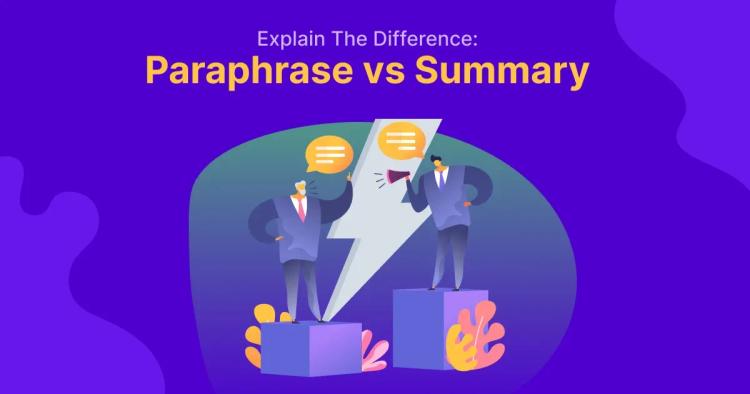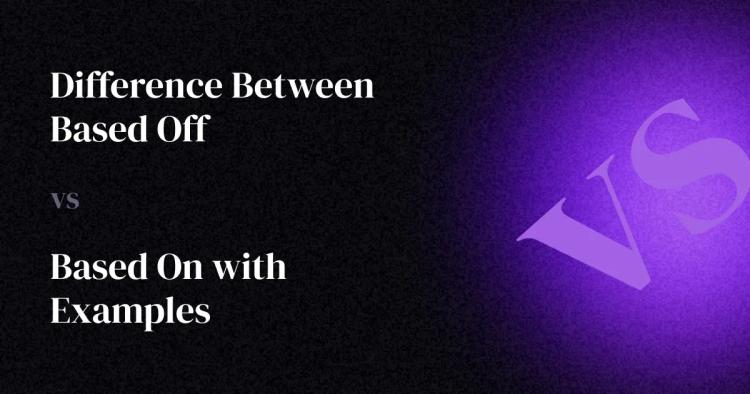In the vast landscape of content creation, the art of summarization emerges as a critical skill that not only streamlines information but also preserves the authenticity of the original work. At the heart of this skill lies the delicate balance between conveying essential ideas while avoiding the pitfalls of plagiarism.
Plagiarism, the act of presenting someone else's ideas or words as your own, not only undermines the creative process but also erodes the ethical foundations of content generation.
In this journey of mastering summarization, we explore effective techniques, ethical considerations, and a valuable tool like Copychecker that aids in upholding the integrity of your work.
Understanding the Importance of Summarizing and Avoiding Plagiarism
The Purpose of Summarization
Summarizing is more than mere content reduction; it is an art that requires extracting the core essence of a text while maintaining its context.
A well-crafted summary captures the main ideas, key points, and essential arguments of a source material, condensing its length without compromising its significance.
Dangers of Plagiarism in Content Creation
Plagiarism casts a dark shadow over the creative realm. When one fails to attribute sources properly or paraphrase accurately, the integrity of their work suffers.
Beyond legal consequences, plagiarism erodes trust, hampers intellectual growth, and stifles originality, ultimately impacting the credibility of the creator.
Ethical Considerations of Using Others' Work
In the digital age, accessing information has become effortless, blurring the lines between originality and imitation. Ethical content creation demands due diligence in acknowledging and respecting the intellectual property of others.
Incorporating someone else's work responsibly not only enriches your content but also contributes to a harmonious ecosystem of ideas.
Effective Summarization Techniques
Reading and Comprehending the Source Material
Summarization begins with immersion. Reading the source material thoroughly fosters a deep understanding of its nuances, enabling you to discern the primary concepts from supporting details.
Identifying Key Points and Main Ideas
While reading, identify the crux of the content. Pinpoint the central themes, arguments, and critical elements that drive the narrative. These are the pillars around which your summary will be constructed.
Paraphrasing and Condensing Information
Paraphrasing is the cornerstone of summarization. Translate complex sentences into your own words, maintaining the core idea while shedding unnecessary details. Condensation involves omitting secondary information that doesn't contribute significantly to the summary's essence.
Citing Properly: The Role of References and Citations
Different Citation Styles
Proper citations lend credibility to your work and acknowledge the original sources. Styles like APA, MLA, and Chicago offer guidelines for formatting references. Familiarize yourself with these styles to ensure consistency and accuracy.
In-text Citations for Paraphrased Content
Whenever you paraphrase a source, provide an in-text citation to acknowledge the origin of the idea. This practice not only prevents inadvertent plagiarism but also strengthens the veracity of your summary.
Creating a Comprehensive Reference List
A reference list is the compass that guides readers to the sources you've utilized. Compile a detailed list of all the sources referenced in your work, ensuring that it aligns with the citation style you've chosen.
Paraphrasing vs. Plagiarism: Drawing the Line
Understanding What Constitutes Plagiarism
Plagiarism goes beyond verbatim copying. It encompasses using someone else's ideas, phrasing, or concepts without proper attribution. It's essential to recognize that even unintentional duplication can lead to plagiarism.
How to Rephrase Without Crossing into Plagiarism
Successful paraphrasing involves more than just changing a few words. Understand the source deeply, and then articulate its essence using your own words. Compare your paraphrased version with the original to ensure it is distinct.
Using Your Own Words While Maintaining the Original Meaning
True mastery of paraphrasing lies in the ability to capture the essence of the original while expressing it in your unique voice. Your paraphrase should mirror the idea without mirroring the words.
Introducing Copychecker: A Valuable Plagiarism Checker Tool
Overview of the Copychecker Tool
Copychecker is a powerful ally in the fight against unintentional plagiarism. This innovative tool scans your content against a vast database of sources, highlighting potential matches and enabling you to rectify any inadvertent replication.
Features and Benefits of Using Copychecker
Copychecker goes beyond a simple plagiarism checker. It provides a comprehensive analysis of your content's originality, allowing you to focus on refining your work rather than worrying about potential issues.
How Copychecker Helps Ensure Originality
Copychecker acts as your vigilant assistant, identifying areas that require your attention. It empowers you to address any potential plagiarism before finalizing your content, preserving your credibility and originality.
Using Copychecker Effectively
Step-by-step Guide to Using Copychecker
Utilizing Copychecker is intuitive. Simply upload your content, and the tool will swiftly analyze it against its extensive database. Follow the prompts to review highlighted sections and consider the suggested changes.
Interpreting Copychecker's Results
Copychecker's results may display highlighted sections that match existing sources. Investigate each match to determine if it's a valid reference, a paraphrase, or potential plagiarism. This critical evaluation ensures accurate judgment.
Addressing Potential Plagiarism Issues
Should Copychecker detect similarities, don't panic. Address each instance by revisiting your content, making necessary changes, and incorporating proper citations or paraphrases. Copychecker acts as a safety net, guiding you toward originality.
Balancing Originality and Source Material
Incorporating Quotes When Necessary
Quotes provide veracity and authority to your content. When directly quoting a source, use quotation marks and provide a proper citation to pay homage to the original author's contribution.
Strategies for Weaving Your Thoughts with Summarized Content
Blending your insights with summarized content creates a harmonious narrative. Introduce summarized concepts, provide context, and follow up with your interpretation or analysis to connect the dots for your readers.
Adding Personal Insights to Maintain Authenticity
Your original voice is what sets your work apart. Use your unique perspective to add value to the summarized content. Express your thoughts, opinions, and analysis to infuse your summary with your personal touch.
Editing and Reviewing: Refining Your Summarized Content
Revising for Clarity and Coherence
Revising your summary ensures clarity and coherence. Trim redundant phrases, rearrange sentences for better flow, and eliminate any ambiguous expressions. A polished summary is a testament to your commitment to quality.
Checking for Unintentional Plagiarism
Despite your best intentions, unintentional plagiarism can creep in. Reassess your paraphrased sections and citations to ensure they adhere to the standards of originality and attribution.
Seeking Feedback to Enhance Your Summary
A fresh pair of eyes can provide invaluable insights. Share your summary with peers, mentors, or editors who can provide constructive feedback. Their perspectives can help refine your work further.
Educating Others: Sharing Good Practices
Teaching Summarization and Anti-plagiarism Skills
Empower others by sharing your summarization skills and ethical content practices. Offer guidance on how to extract key concepts, rephrase, and attribute sources effectively. Cultivate a community that values originality.
Encouraging Responsible Content Creation
Advocate for responsible content creation within your circles. Highlight the importance of avoiding plagiarism, citing sources, and embracing the enriching process of summarization.
Promoting a Culture of Originality
Elevate the discourse on originality in content creation. Encourage creators to tap into their creativity, develop unique perspectives, and contribute to the intellectual growth of society.
FAQs
Can I use direct quotes in my summary?
Yes, you can use direct quotes sparingly in your summary. Make sure to enclose them in quotation marks and provide proper attribution.
How do I avoid unintentional plagiarism?
Extensively use plagiarism checker tools like Copychecker to identify any unintentional matches and address them before finalizing your work.
Is summarizing the same as copying and pasting?
No, summarizing involves condensing the main ideas and key points in your own words, whereas copying and pasting involves directly lifting content without alteration.
Why is proper citation essential in summarization?
Proper citation gives credit to the original authors, upholds ethical writing standards, and allows readers to access the source material for further exploration.
Can I include my individual opinions in a summary?
Yes, including your personal insights can enhance your summary by adding a unique perspective and highlighting your understanding of the source material.
Conclusion: Mastering Summarization and Upholding Integrity
Summarization is not merely a utilitarian skill; it's an art that requires practice, dedication, and a commitment to refining your craft. Embrace it as a means to enhance your communication prowess and intellectual acumen.
Originality is the bedrock of creativity. As you master summarization, remember that your unique voice and insights are invaluable assets. Stand on the shoulders of giants but ensure you do so with integrity and respect for their contributions.
In a world inundated with information, quality and authenticity shine brightly. Your dedication to crafting summaries that encapsulate the essence of complex ideas, coupled with your commitment to ethical content creation, has the potential to reshape conversations, inspire change, and contribute to the progress of society as a whole.







